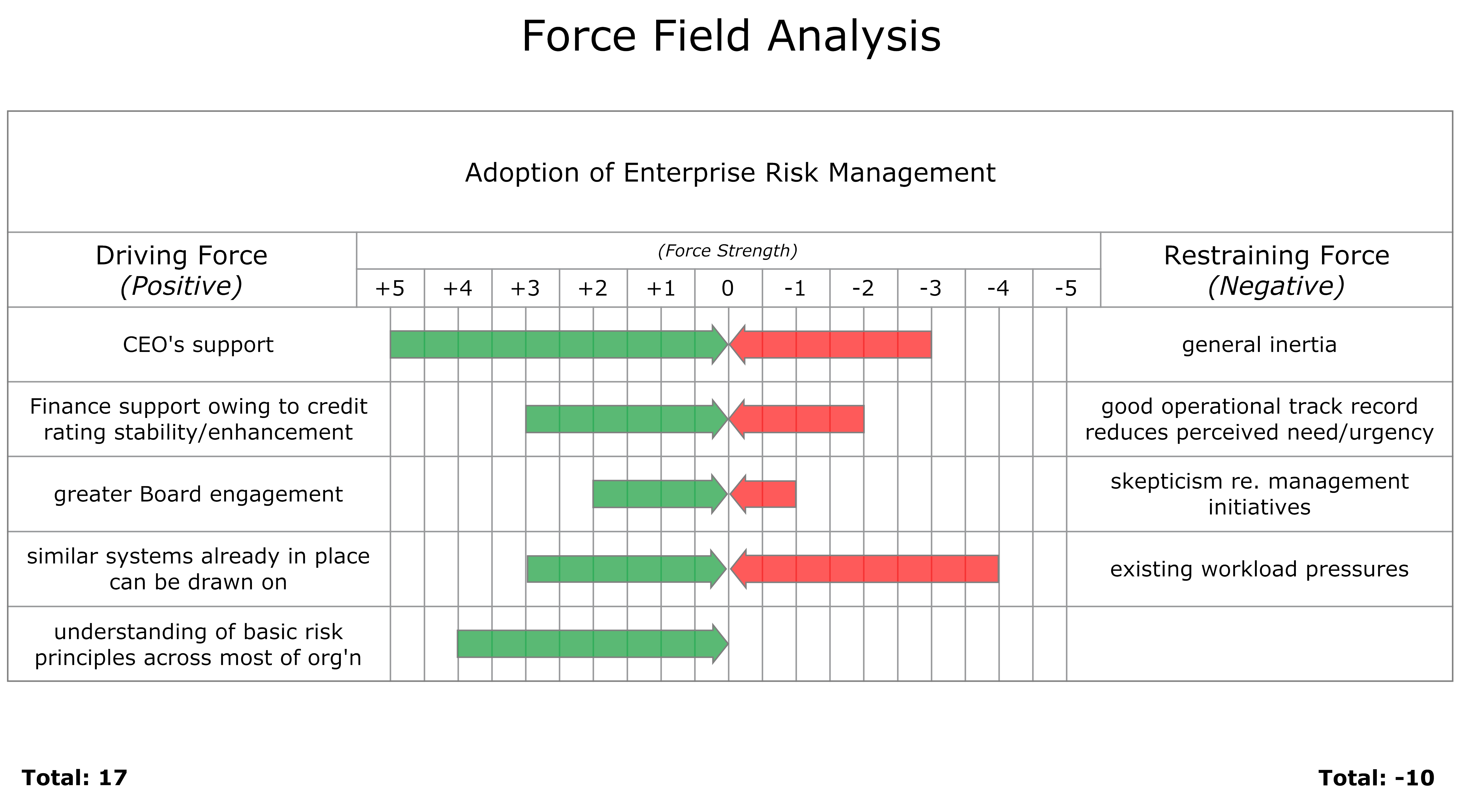WILL A CHANGE PROJECT SUCCEED? – THE FORCE FIELD ANALYSIS
This Tools for Change briefing deals with Force Field Analysis – a simple yet powerful technique to consider the forces for and against a given initiative. Force Field Analysis is used as a filter for change projects to help identify whether they are likely to ‘fly’ or fail: those where the sum of forces helping a given initiative significantly outweigh those restraining or opposing it are more likely to succeed. This is depicted graphically.
Helping and hindering forces for change
Any successful change program relies on building a consensus that comprehends stakeholders’ views and interests. Force Field Analysis provides a means to assess and weigh up those interests. It’s built on the same ’for and against’ logic of a cost-benefit analysis, but it deals with stakeholder interests and other forces (such as social or technological changes) rather than economic values.
In a Force Field Analysis all forces (both helping and hindering) are identified, rated on a scale (usually from 1 to 5) and plotted, with the total of each side (helping versus hindering) then tallied. A Force Field Analysis would typically be carried out by the steering committee or working group responsible for a change program on an ‘as is’ basis as a means to assess whether a given project should form part of an overall change effort.
A change management case study using Force Field Analysis
Below is a worked example of a completed Force Field Analysis for an organisation considering whether to implement an Enterprise Risk Management system.

In this example, the CEO’s support is a critical driving force, and the organisation’s basic understanding of risk management, and the support of the Finance division are critical. The familiarity and operational value of similar systems already in place, and the prospect of greater engagement with the Board are other helping forces.
On the other hand, existing workload pressures, general inertia and a low perceived need for the initiative count against it, as does a general scepticism about broad-scale management initiatives.
The total of helping forces tallies to 17, while restraining and hindering forces sum to -10: the initiative therefore has a good chance of success.
Another powerful use for the Force Field Analysis is that it highlights where action can be directed to further stack the deck in favour of success. In this case, existing staff workloads might be examined and re-prioritised, and the CEO and CFO might craft a message to all staff highlighting the importance and benefits of an ERM program and how staff can gain from it (enhanced ability to deal with policy or economic shocks and hence greater job certainty, new job opportunities emerging in the risk area etc.).
So Force Field Analysis is not only a filtering and assessment tool: useful change tactics can also pop out of the process of conducting the assessment. As with so many of these techniques, it’s the conversational process – and the learning arising from it – that provides the most value, rather than the diagram produced at the end.
If you would like assistance developing a change program and building a consensus for it using tools such as the Force Field Analysis, please contact me on phone 0414 383 374 or by return email.
The next series of briefings, starting from late November, will focus on performance: how to analyse it and improve it.
In the meantime, I hope this briefing assists you plan and execute your organisational change initiatives.
Regards, Michael Carman
Director | Michael Carman Consulting
PO Box 686, Petersham NSW 2049 | M: 0414 383 374 | W: www.mcarmanconsulting.com
P.S. To hold an initial no-cost discussion on how you can use the Force Field Analysis – or other relevant change techniques – to improve your organisation’s performance, please contact me direct on phone 0414 383 374.
© Michael Carman 2010-2013
